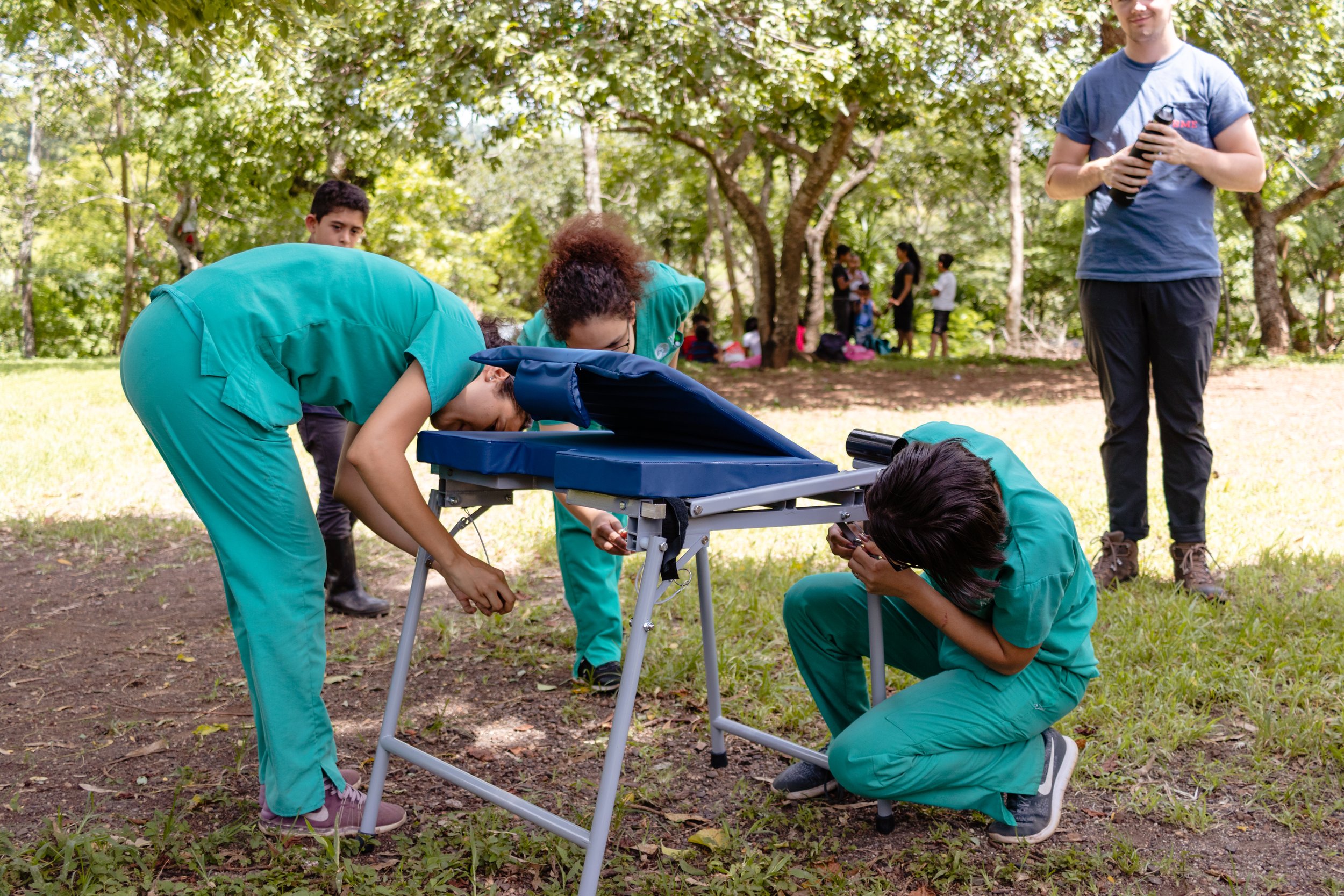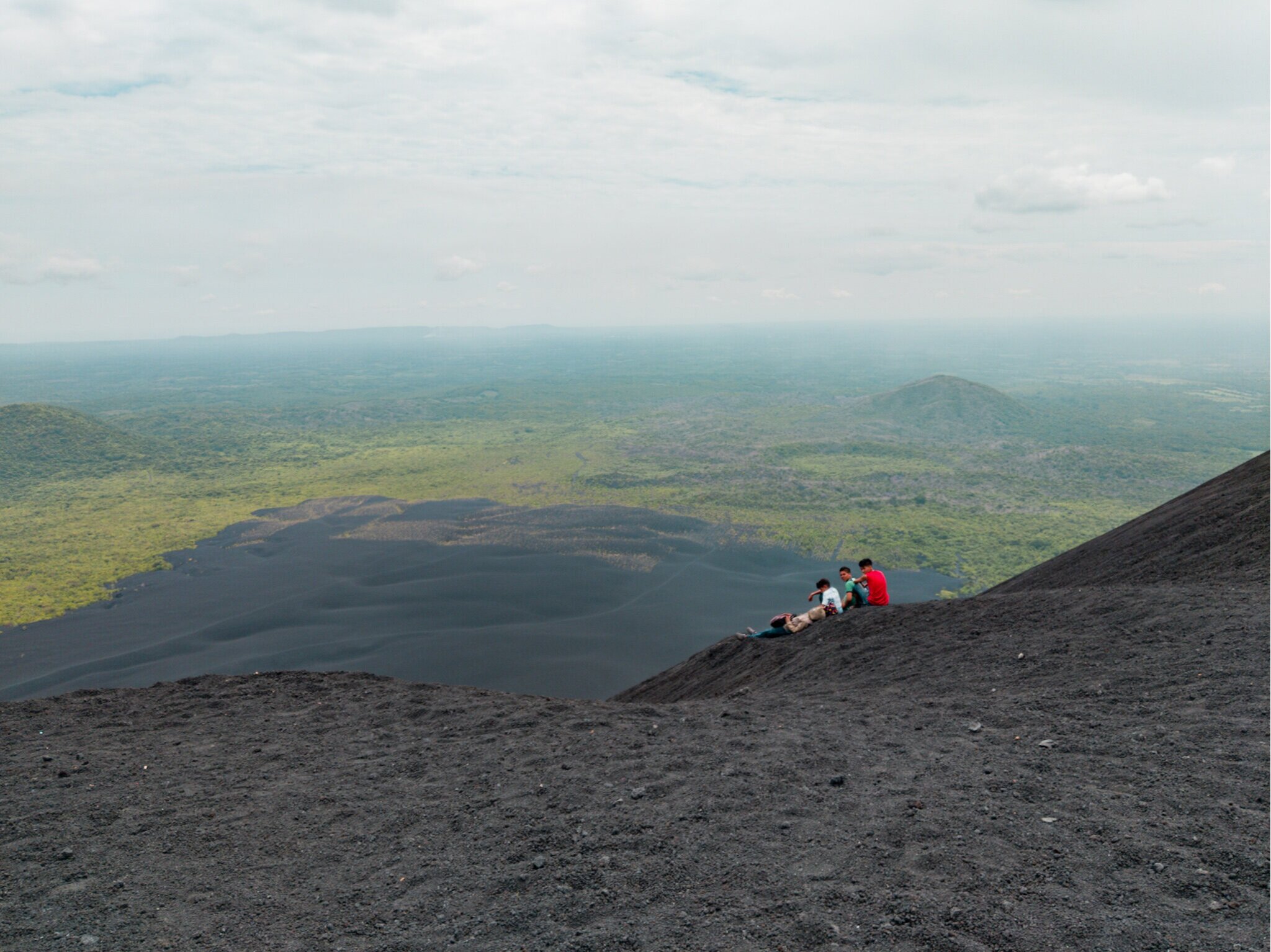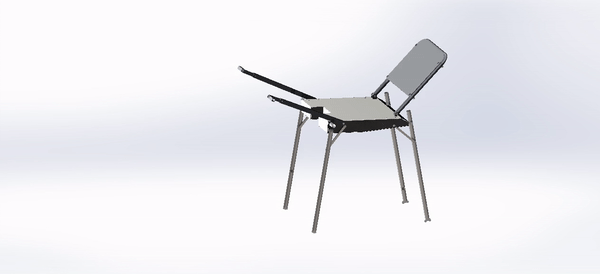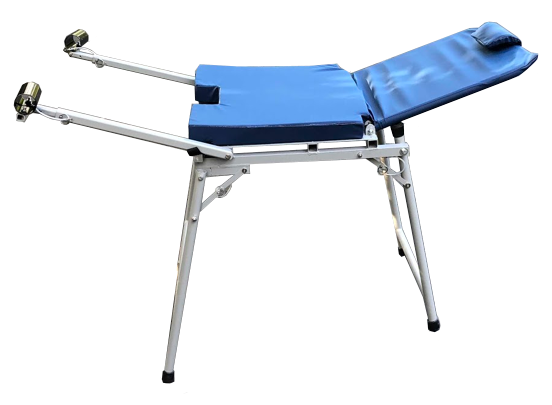
MEET ETA 2.0
Folded
Length: 27.4 in
Width: 26.3 in
Height: 20 in
Weight: 25 lbs
Supports up to 330 lbs
Unfolded
Length: 48.28 in
Width: 26.3 in
Height: 32.56 in
Stirrups: 17.5 in, with extension of 6.18 in
*click to learn about our user requirements
-
Since many rural communities are inaccessible by road and require clinicians to carry equipment on foot, portability is an essential aspect of the device. To be portable, our device must be less than 43.2 cm (17”) in length; this value was determined by finding the average torso length of women]. The width of the device (24 inches) was determined by finding the minimum door frame width for a bathroom door (28 inches), which is the narrowest standard for a door, and then accounting for 2 inches on either side so that the table can pass through when carried on a person’s back. Additionally, the total weight of the device should be less than 11.3 kg (25 pounds) based on clinical feedback that matched our ergonomic calculations. The average weight of a Nicaraguan woman was estimated to be 135 - 140 pounds based on the average weight of the Nicaraguan population (150.3 lb) and weight differences between males and females. weigh at maximum between 21 to 28 pounds.
-
The purpose of the gynecological examination device is to enable clinicians to conduct more effective examinations, which is largely determined by appropriate patient positioning. The optimal height of the examination surface was determined to be between 73.66 cm (29”) and 78.74 cm (31”) by using the shortest and tallest measurements we got from clinician feedback on our trip in 2016. The optimal patient leg separation of 35 - 60 degrees was determined by findings from a previous study and modified to include 50-60 degrees after conversations with our clinical advisor, Dr. Frank Anderson. The angle of the patient’s buttock base from the horizontal was determined to be 0 - 30 degrees; a slightly elevated angle is important in enabling clinicians to look down into the pelvic region. The patient’s back relative to the horizontal should be able to be raised up to a maximum of 60 degrees, and the most critical angle is 0 degrees since most gynecological examinations are conducted when the patient’s back is flat.
-
The device must possess material properties that enable quick and effective sanitation. Most of our partner clinics use corrosive Ergonomically, people should carry no more than 15-20% of their body weight for an extended period of time; therefore the device should cleaners such as alcohol, so the device materials must be non-corrosive and non-absorbent.
Since mobile clinics have a limited amount of time in each community, set-up and take-down time must be no more than 3 minutes because that is the time it currently take the Lily Project to set up their table, based on a video taken of them setting up their table during our trip in May 2016. It also is important that the device is intuitive to use, which can be measured by a modified System Usability Scale, shown below. Unlike traditional System Usability Scales, this scale does not have a neutral option, so evaluators are forced to choose either a positive or negative response.
-
It is important for medical equipment to be aesthetically attractive for patients. To test for aesthetics, the device should be tested against three metrics: simple/complex, trustworthy/untrustworthy, and attractive/unattractive in a random sampling of users (medical staff and patients) and non-users (general public). The device should be shown for up to 30 seconds, and then the user should rank these metrics based on first impressions. See figure below for sample usability survey. The device should receive an average rating of at least +1 for each of these scales during usability testing. This is important due to the psychological impact on patients: it will give them more confidence and reassurance to get examinations done. Our table has an average score of >=+1 on user aesthetic scale of -3 to +3 for complex/simple, untrustworthy/trustworthy, unattractive/attractive
It's important for patients to feel comfortable during the exam administration. Bedding thickness should be between 5 - 8 cm (2 - 3.15”) based on current medical examination tables on the market, which we have upheld within our design.
safety is our prioirty for our stakeholders, patients, and team
We have ensured the lifetime and durability of our design by pursuing dynamic testing. The device lifetime should be defined based on number of examinations rather than time frame since our partner clinics would use the device with a wide range of frequency. We estimated ideal values based on exam frequency of partner organizations.
Our table is tested to last 15,600 uses
Since Nicaragua has a tropical climate, the device should not deteriorate with exposure to humidity and rain. It also should be able to withstand sudden forces since the equipment could be dropped during transportation; therefore, the device should not fail when dropped from a height of 2.3 m (7.7 ft). This value was calculated from the mean height of a sample of commonly used transportation vans, since vans have been observed to be used for transportation to clinics in rural locations.

WE AIM TO KEEP COST LOW, with a price point of $1000
We understand that mobile clinics have limited means as is. In order to maximize access, we knew we needed to keep cost low.
Based on conversations with our partner organizations, in-person community brigades, as well as intensive market research, we have identified our main competitor as a standard massage table.
Massage Table
$60
Portable ✗
Sanitary ✗
Accurate ✗
Our Table
$1000
Portable ✓
Sanitary ✓
Accurate ✓
Clinical Grade Table
$ 3295
Portable ✗
Sanitary ✓
Accurate ✓


